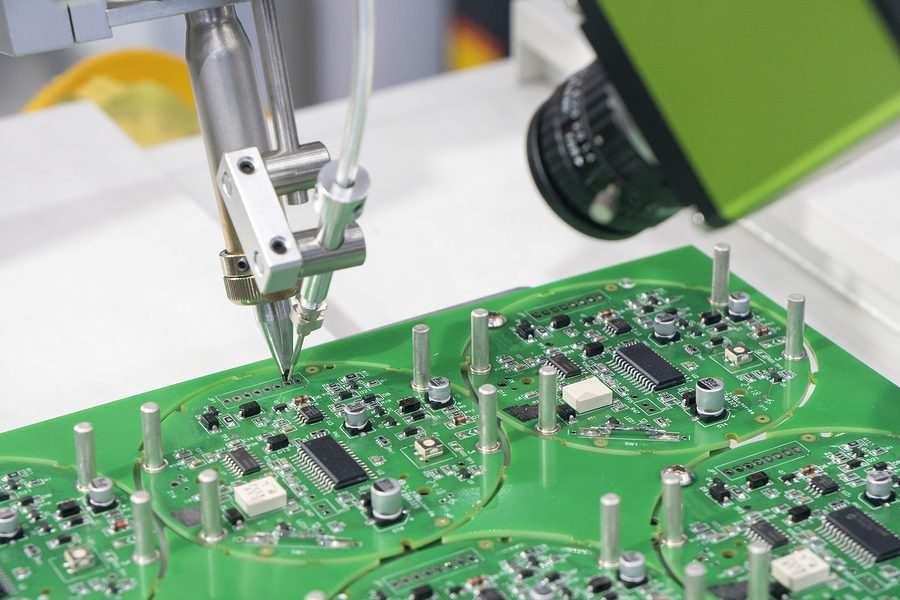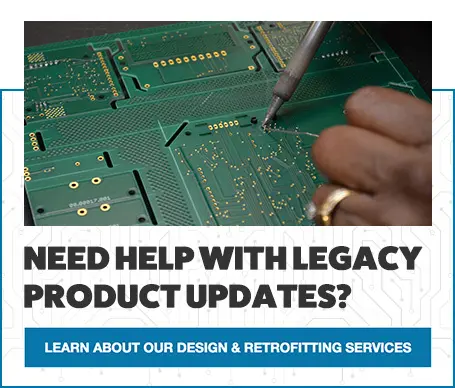Obsolete Parts is the Great Vulnerability in an Electronic Manufacturing Supply Chain

Counterfeits are everywhere. The electronic industry is particularly vulnerable. Electronic technology is rapidly changing, and sometimes it is hard for electronic manufacturers to keep up. The need to regularly source parts or complete a rapid redesign due to parts obsolescence only increases the risk of fakes making their way into your product. It may seem like an uphill battle, but taking time to employ stricter counterfeit electronic component detection and avoidance methods could be the key to ensuring high-quality in your next project.
Obsolete Parts
Parts obsolescence can be quite frustrating in the electronic industry. Better and newer technology often deems a component obsolete and it is no longer produced by the original manufacturer. Or, a part is discontinued due to low demand. Either of these can leave manufacturers scrambling to search for hard-to-find components in order to avoid a redesign. This opens manufacturers up to the risk of low-quality, copy-cat, and counterfeit parts being sold as the real thing.
When obsolete parts become an issue, implementing an obsolescence management plan will go far. This involves being proactive and having a strategy on hand for when a part does become obsolete. This can prevent the scramble to quickly find a needed component and risk turning to an unauthorized supplier.
The Effects of Counterfeits
Counterfeit parts can, quite literally, break your business. If fake components make it into your product, you could lose sales and contracts, or run the risk of a lawsuit. One of the biggest issues is non-functional parts. A product is essentially ruined when components do not function properly. Functional substandard parts are just as bad. These components might begin to work as expected, but they may be refurbished or substandard, and can fail at any time.
Products that include counterfeit electronic parts can also be dangerous. A user can be injured if a counterfeit part fails. Failure of a fake part can result in a short circuit that can possibly escalate to a fire.
Counterfeit Electronic Component Detection & Avoidance
As counterfeit electronic components become an increased risk to the supply chain, it is crucial to monitor and track the source of obsolete components back to the OCM. Authentication, traceability, and testing are key.
For starters, you can secure your supply chain with a trusted network of thoroughly vetted suppliers. Using only original component manufacturers and a franchised or authorized distributor is the best way to mitigate the counterfeit threat. An unbroken chain of custody directly from the parts supplier to the manufacturer will also reduce the risk of counterfeit parts.

Independent testing of components is another good way to tackle counterfeit electronic detection. This can include visual inspection, x-ray, and electrical tests. And don’t just test parts. It is also a good idea to validate your suppliers’ environmental and regulatory compliance certifications, too.
When searching for an electronic contract manufacturer to partner with on a project, your safest bet is to find a company that already has best practices for counterfeit electronic component detection and avoidance in place.
Levison Enterprises has a Zero Counterfeit objective and a commitment for continual improvement and customer satisfaction through precise inspections which carefully screen for the threats of counterfeiting and ensure the delivery of quality products. If you are looking for a company you can count on to work hard and keep counterfeit parts from being used in your projects, contact Levison Enterprises to discuss your next build today.
Start Your Quote Now!